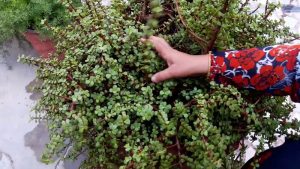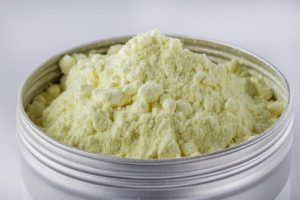
Those cover plants that are able to completely cover the ground in a luxuriant manner are called carpet coverings. Therefore, it is not a category of plants but of species from which certain particularities are exploited. In EcologiaVerde we tell you what are the types of cover plants most used to cover floors and walls. As well as some basic care to take into account to care for the upholstered area.
Types of covering plants to cover floors and walls

Depending on the growth system of the plant in question, we can distinguish different types of cover plants :
- Those that widen in the form of a crown around a central root.
- Those that extend through stolons .
- The bushes that develop more to the width that to the stop, with long and fallen branches.
- Climbers that take advantage of the horizontal position for their development.
If we choose correctly, they can serve as a corrective element for aesthetic deficiencies of other plants. In the case of shrubs that tend to lose their leaves at the bottom will allow us to disguise this feature . And in those areas of high and dark vegetation we can provide luminosity with species of light foliage.
For each type of zone there is a more appropriate species. But in general, there are some basic rules to obtain a thick and homogeneous coating. Here are some guidelines for growing cover plants to cover the soil :
- Work the soil and clean it of herbs before planting
- Leave a space between the plants taking into account their future development.
- Systematically remove weeds until the plants have covered the entire area, using a light layer of pine bark as a support system. Once fully developed they will prevent the passage of light.
Cold-resistant cover plants
Choosing the right plants that we want to have in our garden is not a simple decision. There is a great variety of species. And, in addition, the characteristics of our garden, such as humidity, temperature, daily hours of light, etc. condition and limit our choice. Thinking about what we want to achieve can help us a lot, so if what we want, for example, is to get a garden that needs little care. We will choose plants that need little water and attention. If we look for a colorful garden and Very striking, we will choose floral species. And if we need to cover underpopulated areas we will choose upland plants.
What are the covering plants?
The cover plants are those that develop and grow forming a kind of cover or plant carpet , being able. Therefore, to cover large areas of land. They are also known by the name of creeping plants, precisely because of this characteristic. Since their development is usually produced horizontally at ground level, without showing only vertical development.
Its use is mainly ornamental, being used to cover unpopulated areas of land or disguise imperfections such as. For example, irregularities in the ground, in which hardly grows vegetation, slopes resulting from the execution of works or earthworks and even to decorate fences. And walls , can also be used as insulation from heat and cold. In addition, these plants need little attention and little water, which makes them a more than interesting alternative when replacing. Or replacing traditional grass. Some species are able to withstand extreme temperatures, both hot and cold, being able to survive frost.
Types of cover plants and species names
There are many types of carpet plants, being the crass , the most popular and known. Although we can also find shrubs, perennial, climbing and climbing species.
- Crassas: they are carpeting plants with fleshy leaves and large, which are usually covered by a fluff that characterizes them. These are able to store a large amount of water and nutrients that the plant requires, allowing it to be supplied in times of drought. Example: Lampranthus aureus .
- Vivacious: they are deciduous cover plants, that is to say that they lose the leaves in the coldest seasons of the year and returning to sprout during the spring. Example: Festuca glauca .
- Perennial: these plants retain their leaves during all seasons of the year, even being able to flower. Example: Begonia semperflorens .
- Shrubs: they are woody cover plants, that is to say, their stem is woody and usually presents ramifications. Example: Romero rastrero or el Junipero .
Why choose carpet plants
There are many benefits of the carpet plants. These are some of them and, therefore, reasons why we recommend them to decorate your garden or outdoor area even if it is a cold place.
The first, and that we have already mentioned before, is the ability to cover and decorate large unpopulated areas of land where other plants have difficulty growing. There are many species, with a variety of shapes, colors and textures, so they offer us multiple possibilities when decorating our garden.
On the other hand, these plants are very easy to grow and hardly need attention so its maintenance is very simple, being, in most cases, its planting more recommended than the classic lawn.





